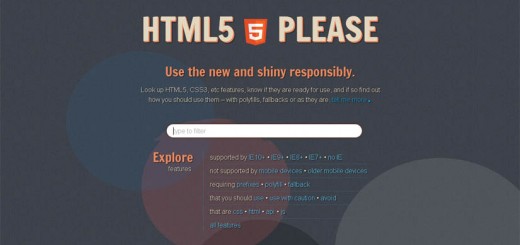Over the last decade Ruby has become an increasingly popular solution for building web applications through a fast and cost-efficient development process. Ruby is dynamic, open source programming language with a focus on simplicity and productivity. It has an elegant syntax that is natural to read and easy to write.
There are myriad of tools and resources out there which make it easy for developers to keep their code clean and well arranged while developing innovative and large Ruby on Rails applications. These tools not just make developers job easier but also help them to arrange the complex code.
For this roundup we have compiled a list of 12 Best Ruby on Rails Development Tools which are easy to use and optimize your applications easily.
Read Also —
12 Best Ruby Frameworks for Accelerated Development
1. Pry

Pry is a powerful alternative to the standard IRB shell for Ruby. It features syntax highlighting, a flexible plugin architecture, runtime invocation and source and documentation browsing.
Pry also aims to be more than an IRB replacement; it is an attempt to bring REPL driven programming to the Ruby language. It is currently not as powerful as tools like SLIME for lisp, but that is the general direction Pry is heading.
Pry is also fairly flexible and allows significant user customization making it a good choice for implementing custom shells.
2. Bullet
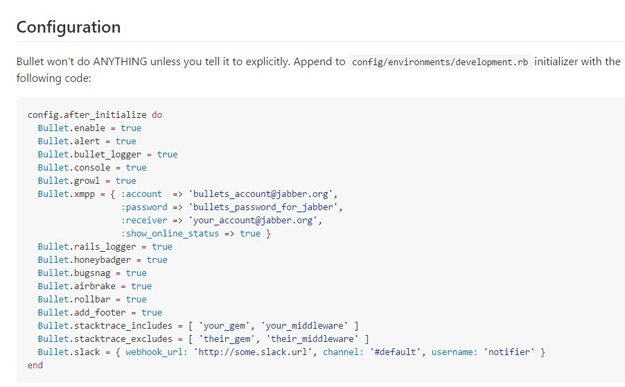
The Bullet gem is designed to help you increase your application’s performance by reducing the number of queries it makes. It will watch your queries while you develop your application and notify you when you should add eager loading (N+1 queries), when you’re using eager loading that isn’t necessary and when you should use counter cache. Best practice is to use Bullet in development
3. Hobo
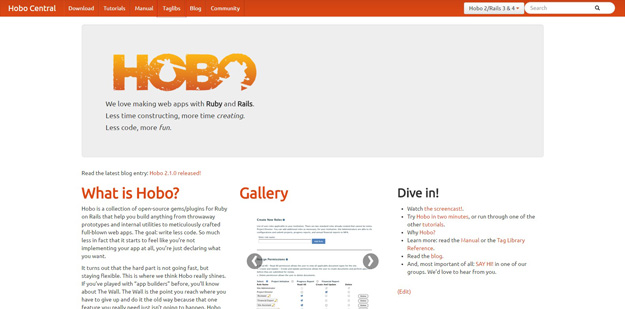
Hobo is a collection of open-source gems/plugins for Ruby on Rails that help you build anything from throwaway prototypes and internal utilities to meticulously crafted full-blown web apps. The goal: write less code. So much less in fact that it starts to feel like you’re not implementing your app at all, you’re just declaring what you want.
4. Guard
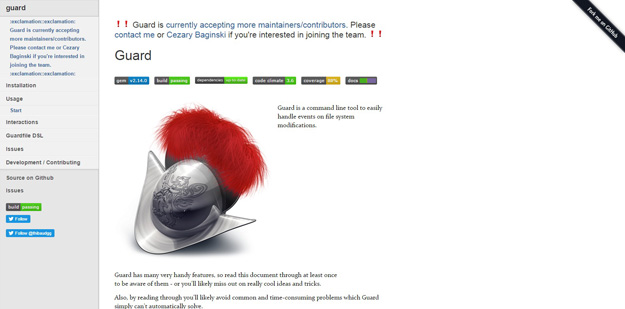
Guard automates various tasks by running custom rules whenever file or directories are modified. It’s frequently used by software developers, web designers, writers and other specialists to avoid mundane, repetitive actions and commands such as “relaunching” tools after changing source files or configurations.
Common use cases include: an IDE replacement, web development tools, designing “smart” and “responsive” build systems/workflows, automating various project tasks and installing/monitoring various system services.
5. Sinatra
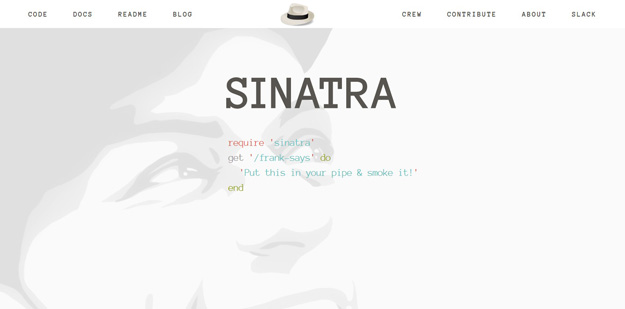
Sinatra is a DSL for creating web apps with Ruby with minimal effort. It’s very well-documented and easy to get started with.
6. Breakman
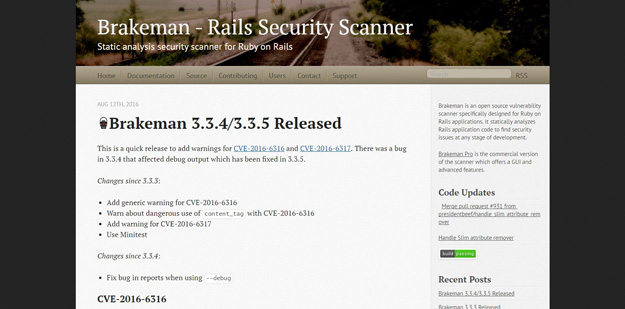
Brakeman is an open source vulnerability scanner specifically designed for Ruby on Rails applications. It statically analyzes Rails application code to find security issues at any stage of development.
7. Opal

Opal is a Ruby to JavaScript compiler that runs in any browser, plus a corelib and runtime implementation. It’s a great resource for building fast client-side applications in Ruby.
8. Echowrap

A Ruby interface to the Echonest API. The Echonest API is based on their automatically derived-database of about 30 million songs which is aggregated using web crawling, data mining, and digital signal processing techniques. The API includes support for music recommendation, artist recommendation, playlist generation, acoustic analysis, music identification, and data feeds.
9. Yard
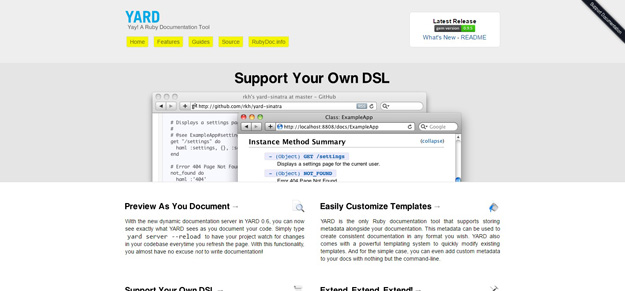
YARD allows you to preview your code as you write your documentation for your Ruby app. It has easy-to-customize templates, supports your own DSL, and already has a number of great extensions, with more added each day.
YARD is the only Ruby documentation tool that supports storing metadata alongside your documentation. This metadata can be used to create consistent documentation in any format you wish. YARD also comes with a powerful templating system to quickly modify existing templates. And for the simple case, you can even add custom metadata to your docs with nothing but the command-line.
10. RuboCop
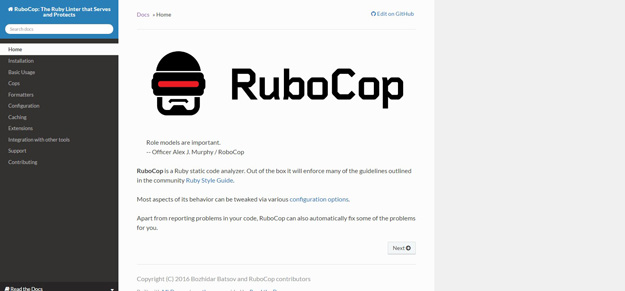
RuboCop is a Ruby static code analyzer. Out of the box it will enforce many of the guidelines outlined in the community Ruby Style Guide.
A good thing is that it’s highly configurable, since the analyzer can be quite irritating if you’re not following the Ruby style guide 100% (i.e. you have lots of trailing whitespaces or you double quote your strings even when not interpolating, etc.).
11. RubyCritic
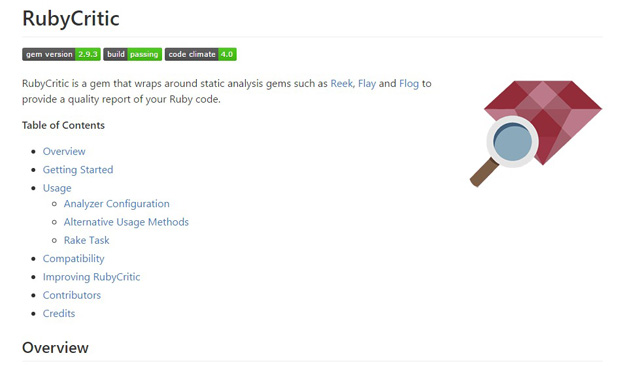
RubyCritic is a gem that wraps around static analysis gems such as Reek, Flay and Flog to provide a quality report of your Ruby code. It creates nicely structured HTML files so you can browse through your smelly code and start refactoring. Out of all of the mentioned static code analysis tools, because of it’s nice output, it’s most convenient to overview and comment with your colleagues.
12. Sycamore
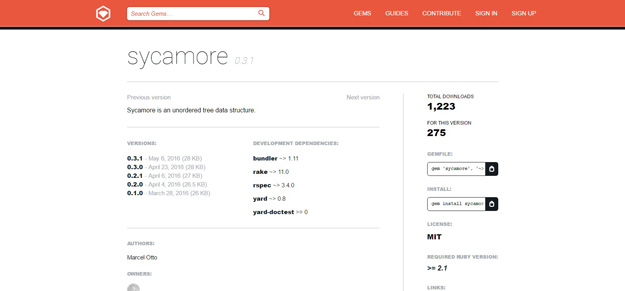
Sycamore provides an unordered tree data structure for Ruby. It grows automatically when needed and has a familiar Hash interface, among other features.




